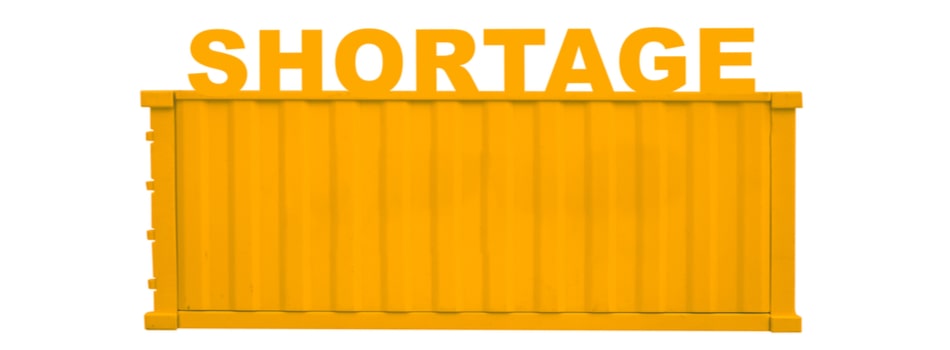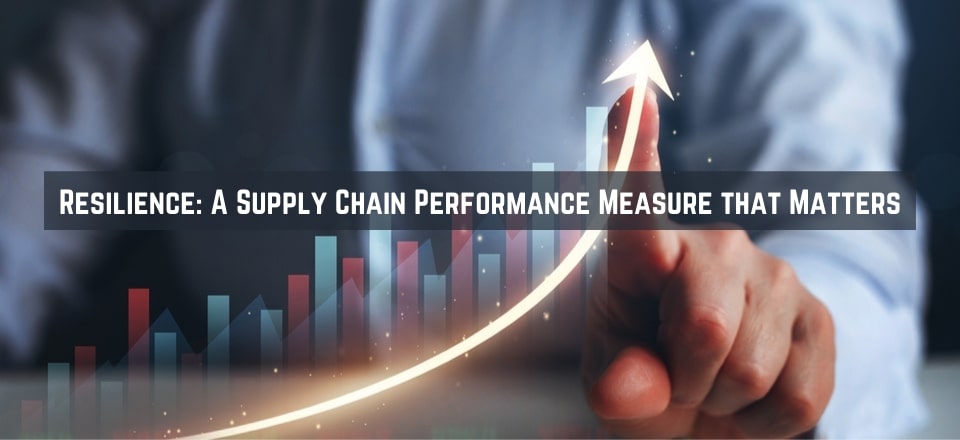Here at Benchmarking Success, we exist to help our customers improve supply chain performance. Historically, many of those customers concentrated keenly on measuring performance aspects such as cost to serve, perfect order, productivity, and cycle and lead times.
Of course, the criticality of such elements is the same now as it always was. Still, since the arrival of the COVID-19 pandemic and the devastating impact it had on many businesses, especially in the initial surge of the virus, supply chain leaders’ attention has been captured by a new performance measure—resilience.

If, like many business leaders, you’re looking for ways to make your supply chain more resilient to major disruptions and black swan events, you might like to consider initiatives based on the following guiding principles.
Lessons From a Pandemic
If the COVID-19 crisis taught us anything, it’s that a single, cataclysmic event can bring industry and commerce to a near-standstill. While some industries were naturally resistant to the issues brought about by the pandemic, others suffered—and are still suffering—disastrous effects.
Many shipping and logistics companies, and the clients that use them, have not been adversely affected by business volume shortfalls. Indeed, in many cases, sales and orders increased.
However, they have experienced significant difficulties in getting goods from one place to another and endured vastly inflated freight and transportation costs.

As a result, many companies struggled to fulfil orders, and not a few fell into dire peril. Those withstanding the supply chain turmoil were the ones with solid risk mitigation strategies and playbooks in place and investment already sunk into supply chain resilience. While none were untouched by the disruption, it was those risk-aware enterprises that recovered more strongly and were able to focus on adapting to a vastly changing commercial environment.
Recognition of Resilience as a Performance Measure

More than a year on from the crisis’s beginning, businesses that weathered the storm, either by sound judgment, luck, or a combination of both, now have a new perspective on the diverse nature of threats and the reality that they can come out of nowhere. They recognise the validity of supply chain resilience as a performance factor and seek ways to strengthen it and protect their revenue streams from future shocks.
Critical Principles for Building Supply Chain Resilience

Has your business survived these pandemic years by the skin of its teeth? Perhaps it fared better than others due to a previously developed culture of risk awareness and preparedness? In either case, there’s no better time than the present to bring supply chain resilience into your portfolio of performance measures and set strategies in place to improve it.
In doing so, adherence to the following principles will get you onto the right footing and help you plan effectively for improving resilience and hence, protecting other elements of business performance, not only during times of disruption but in general, too.
Visibility
In today’s complex supply chains, visibility is a common and sometimes, perplexing, challenge. However, it is a critical enabler for resilience, and the need to gain transparency extends beyond the boundaries of a company’s direct control.
Supply chain resilience depends on visibility across the network, from end to end, and throughout at least two, preferably three, tiers of supply.
The only realistic way to achieve that is to commit to sharing data with all tier 1 suppliers in your ecosystem, along with your logistics partners, and your customers. That leads us nicely into another key principle of supply chain resilience—collaboration.
Collaboration
Exchanging data with other organisations requires a level of trust that can only be achieved through active relationship-building. During the “normal” times before COVID came along, it was easy to concentrate primarily on the internal elements of the supply chain and take relationships with partners and suppliers on the periphery. However, when there is a need to react quickly and positively to unforeseen events, the goodwill banked by proactive relationship building is invaluable.
Collaboration initiatives could include joining forces with tier-1 partners to understand and develop mitigation strategies for risks in lower tiers, sharing inventory data to avoid surprises in the balance of demand and supply, and system integration to improve purchasing and order-management flows.

Working together with your top-tier vendors to improve relationships and collaboration is vital to secure their willingness and ability to support your business during times of disruption. It will also help you to ensure early awareness of any potential problems within their supply chains.
Agility
By increasing agility within your supply chain management strategies and across your network, you can position your business to weather a range of adverse events and recover from their effects more successfully.
Actions to increase supply chain agility might include:
- Standardising systems and business processes, enabling operations to be transferred quickly to new locations, or the addition of new operating centres to increase capacity.
- Improving the way that managers, employees, and functional teams communicate with one another.
- Distributing control and power across the workforce, enabling individuals and teams to take definitive actions at the first indication of a threat to the supply chain.
- Accelerating and streamlining the flow of data and information through the supply chain.
- Partnering with suppliers and service providers that pursue and implement flexible strategies.
- Prudent implementation of buffer inventories and process-redundancy measures.
- Contingency planning and business-recovery playbooks.
- Shifting from traditional demand forecasting to more dynamic demand-sensing strategies
Diversification
Costs have been a primary focus of supply chain management for many years, leading to a tendency among businesses to adopt single-sourcing strategies. Even among companies that maintained a more diverse portfolio of suppliers, sourcing from a single geographic region has been typical.
That trend was to be a drawback when the pandemic arrived. Suddenly, enterprises found their supply chains severed, or at least, severely constrained, as one country after another saw industries’ output curtailed and freight arteries constricted.
Now, as global recovery slowly unfolds, it’s time to:
- Reconfigure supply networks
- Take an approach of diversification towards sourcing raw materials, components, and products
- Consider partnerships with multiple logistics providers
It’s no secret that diversification can be more costly than traditional sourcing methodologies. Still, it’s the only way to ensure that, when another significant black swan event occurs in the future—and there’s a good chance that it will happen—your business can adjust its inbound supply chain as necessary to avoid the worst effects.
Performance Through Resilience: A New Supply Chain Paradigm
There is no silver bullet to eliminate the risk of future events like the COVID-19 pandemic, or even to end the current uncertainties that exist while the virus is still around. Building supply chain resilience is just one stream of improvement that can help strengthen your business and keep it competitive in a changing commercial environment.
Nevertheless, it is one that many enterprises are now pursuing, and with good reason. A resilient supply chain offers more than simple protection against cataclysmic events like the current pandemic.
Supply chain resilience will help you grow your business and improve other performance areas, even in untroubled times. It will also reduce exposure to those more minor environmental, political, regulatory, and commercial disruptions that are part and parcel of business operations.

Measure Your Progress in Supply Chain Resilience
As you work on your resilience plans, remember to include steps to monitor performance, so you can measure progress and identify the impact of your initiatives.
At Benchmarking Success, we’re here to help you benchmark your supply chain resilience and implement metrics and KPIs to ensure a clear and objective picture of performance. To learn more, get in touch any time using the form on our Contact Us page.


